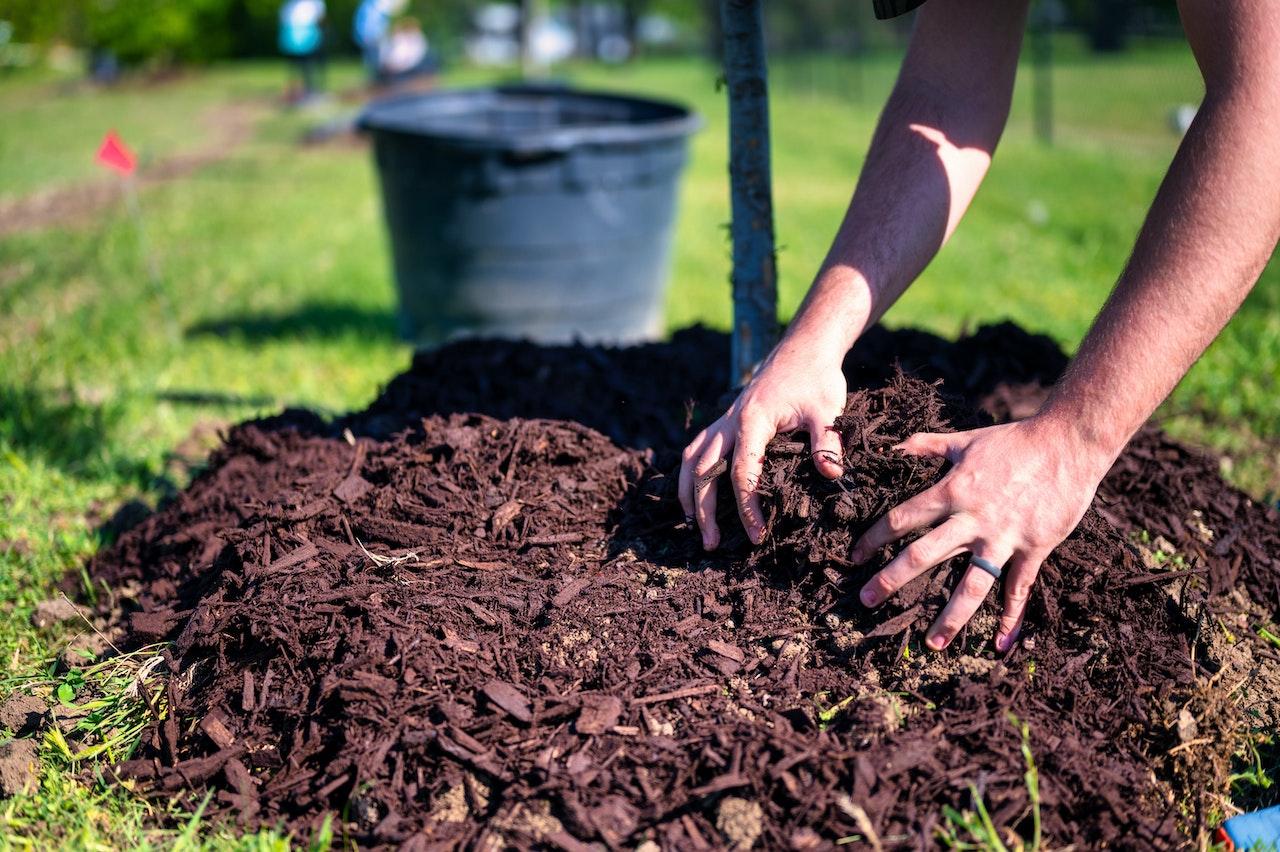
Table of Contents
Black mulch is a popular landscaping option that adds a bold and modern touch to any garden or outdoor space. It’s made from recycled wood and comes in a range of sizes and styles to suit any need. Not only does black mulch look great, but it also has a number of practical benefits, including weed suppression and moisture retention.
In this article, we’ve got everything you need to know about black mulch including what it’s made of and how to use it in your garden.
What is Black Mulch?
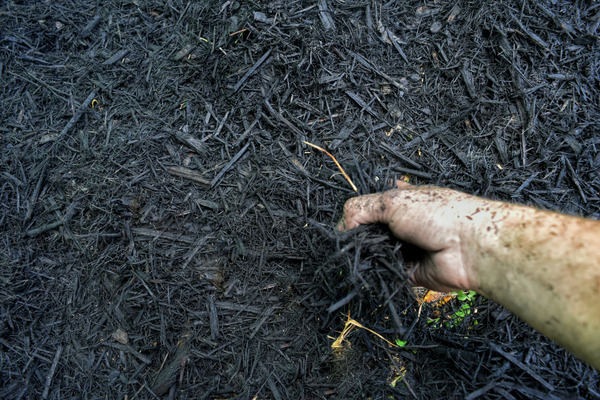
Black mulch is a type of mulch made from materials such as shredded wood, bark, or recycled rubber. It’s dyed black using food-grade dyes and is used to cover the surface of soil in gardens and landscaped areas. Black mulch is often used to enhance the appearance of landscaped areas and to help retain moisture in the soil.
It can also help suppress weeds and prevent erosion. Some people prefer black mulch because it creates a clean, modern look and can help to highlight the colors of flowers and plants.
How is Black Mulch Made?
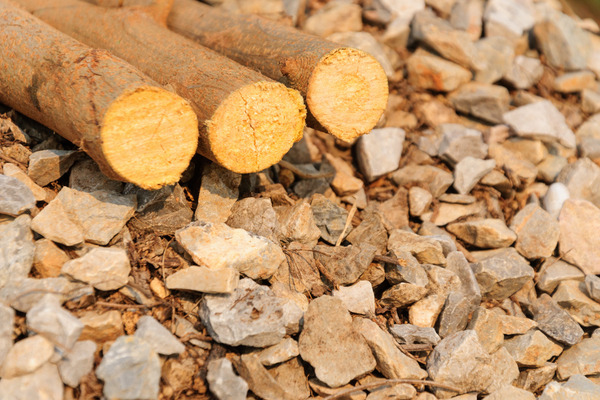
Black mulch is made by shredding wood products, such as tree trunks, branches, and sawdust, and then coloring the shredded material with a pigment. The wood used to make mulch can come from a variety of sources, including trees that have been cut down for development, storm damage, or disease control.
The process of making black mulch begins by chipping or shredding the wood into small pieces. These pieces are then screened to remove any debris or contaminants and to ensure a uniform size. The screened wood chips are then placed in a large tumbler, where they are mixed with water and a dye or pigment. The tumbler rotates to evenly distribute the color throughout the mulch.
Once the mulch is fully colored, it’s dried using heaters or natural sunlight. The dried mulch is then bagged or packaged for distribution and sale. Some manufacturers may also add a binder to the mulch to help it hold its shape and reduce erosion.
Overall, the process of making black mulch involves shredding wood, adding color, drying, and packaging the finished product. The specific steps and equipment used can vary depending on the manufacturer and the scale of production.
The Pros and Cons of Black Mulch
Black mulch can be a visually striking addition to a garden or landscaped area, and it has some specific benefits and drawbacks to consider.
Pros of Black Mulch:
- Visually appealing: Black mulch can provide a sleek and modern look to a garden bed, and it can help to highlight other colorful plants or features.
- Temperature control: Black mulch absorbs heat from the sun, which can be beneficial in cooler climates. It can help to warm up the soil, promoting earlier plant growth in the spring and extending the growing season into the fall.
- Weed suppression: Mulch of any color can help to suppress weeds by blocking sunlight from reaching weed seeds. Black mulch may be particularly effective at this because it absorbs more heat and therefore dries out the soil more than lighter-colored mulches, making it less hospitable for weed growth.
Cons of Black Mulch:
- Fading: Black mulch can fade over time, especially if it is exposed to strong sunlight. This can result in a less visually appealing appearance.
- Heat absorption: While the heat-absorbing properties of black mulch can be beneficial in cooler climates, they can also be a drawback in hot climates. The extra heat absorbed by the mulch can cause the soil to dry out more quickly, which can be a problem for plants that require consistent moisture.
- Cost: Black mulch can be more expensive than other types of mulch, such as wood chips or bark.
How to Use Black Mulch
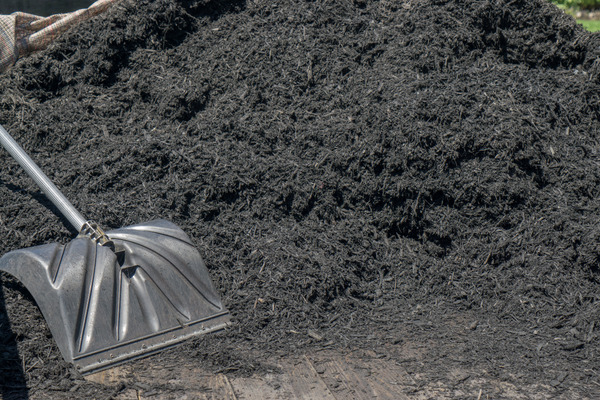
Here are some general tips for using black mulch in your outdoor space:
1. Choose an Appropriate Location
When choosing a location for black mulching, it is important to consider the specific needs and characteristics of the plants and soil in that area. Here are some factors to consider:
- Sun exposure: Black mulch is best used in areas that receive partial to full sun. It absorbs heat from the sun and can help to warm up the soil, promoting earlier plant growth in the spring and extending the growing season into the fall. However, if the area receives too much sun, the mulch may dry out more quickly and require more frequent watering.
- Plant needs: Consider the water and temperature requirements of the plants in the area where you plan to use black mulch. Some plants may be more sensitive to fluctuations in soil temperature and moisture, and black mulch may not be the best choice for these plants.
- Soil type: Black mulch can be used in a variety of soil types, but it may work better in some types than others. For example, black mulch may help to retain moisture in sandy soil, but it may dry out more quickly in clay soil.
2. Prepare the Soil
Before applying black mulch to a garden bed, it’s important to prepare the soil to ensure that the mulch can properly settle into place and provide the desired benefits. Here are some steps you can follow to prepare the soil for black mulching:
- Remove weeds: Begin by removing any weeds from the area where you plan to apply the mulch. This can be done by hand or with a herbicide.
- Loosen the soil: Use a garden fork or tiller to loosen the soil to a depth of about 6 inches. This will help the mulch to settle into place and allow water and nutrients to reach the roots of your plants.
- Add compost: If your soil needs nutrients, you can add a layer of compost on top of the prepared soil. This will help to enrich the soil and improve the overall health of your plants.
- Level the soil: Use a rake to smooth out the soil and create a uniform surface. This will help the mulch to spread evenly and look more attractive once it’s applied.
3. Apply the Mulch
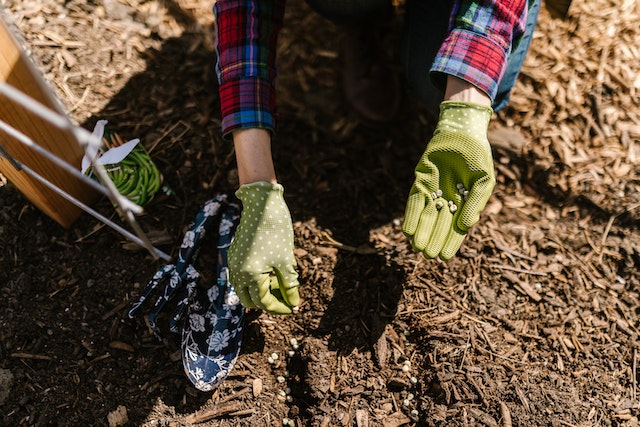
Spread the black mulch evenly over the prepared soil, using a rake to smooth it out and create a uniform layer. The mulch should be applied to a depth of 2-3 inches. Be sure to leave a small gap around the base of plants to allow for proper air circulation and to prevent rot.
4. Water the Mulch
After applying the mulch, be sure to water it well to help it settle into place and begin providing the desired benefits. It is important to keep the mulch consistently moist, but not waterlogged, to prevent it from drying out or washing away.
5. Refresh the Mulch
Black mulch can fade or break down over time, which can affect its appearance and its ability to suppress weeds and regulate soil temperature. Here’s how you can refresh your black mulch:
- Remove the old mulch: Use a garden fork or shovel to remove any old, faded, or broken-down mulch from the garden bed. Be sure to remove all of the old mulch, as leaving any behind can interfere with the effectiveness of the new mulch.
- Prepare the soil: Once the old mulch has been removed, loosen the soil and remove any weeds as you would when preparing the soil for new mulch.
- Add a new layer of mulch: Spread a new layer of black mulch evenly over the prepared soil, using a rake to smooth it out and create a uniform layer. The mulch should be applied to a depth of 2-3 inches.
- Water the mulch: After applying the new mulch, be sure to water it well to help it settle into place and begin providing the desired benefits. It is important to keep the mulch consistently moist, but not waterlogged, to prevent it from drying out or washing away.
By refreshing your black mulch on a regular basis, you can maintain its appearance and benefits in your garden or landscaped area.
Frequently Asked Questions about Black Mulch
Black mulch can be a good choice for some gardens, as it helps to retain moisture and suppress weeds. However, it may not be suitable for all plants, as it can absorb and retain heat more than other colors of mulch. It’s important to consider the specific needs of your plants before choosing black mulch.
Black mulch can help retain moisture and suppress weeds, but may absorb and retain heat more than brown mulch. Brown mulch may blend in better with certain landscapes and may be a better choice for plants that are sensitive to heat. It’s important to consider the specific needs of your plants before choosing a mulch color.
Black mulch will begin to fade and lose its color after several months to a year, especially if it’s exposed to direct sunlight and inclement weather. Some types of black mulch may last longer than others, but it’s generally necessary to replace it every year to maintain its appearance.
There are three possible reasons:
The mulch is experiencing a fungal growth called “snow mold,” which appears as a white or grayish film on the surface of the mulch.
It’s been treated with a product intended to prevent fungal growth, but which may cause the mulch to turn white.
The mulch has simply faded due to exposure to sunlight and inclement weather.
Add a new layer of black mulch on top of the faded mulch or use a mulch dye product, which can be sprayed or brushed onto the mulch to restore its color. It’s also possible to paint the mulch using water-based exterior paint, though this method may not be as long-lasting as the other options.
Termites are attracted to wood, and black mulch is made from wood chips or bark, so it’s possible that termites could be attracted to it. It’s not necessarily more likely to attract termites than other types of mulch.
Wrapping Up
Black mulch is a stylish and practical choice for any landscaping project. Its bold color adds a modern touch to any outdoor space, and its ability to suppress weeds and retain moisture makes it a functional choice as well.
Whether you’re looking to make a statement with your garden or simply want a low-maintenance landscaping solution, black mulch is definitely worth considering.






